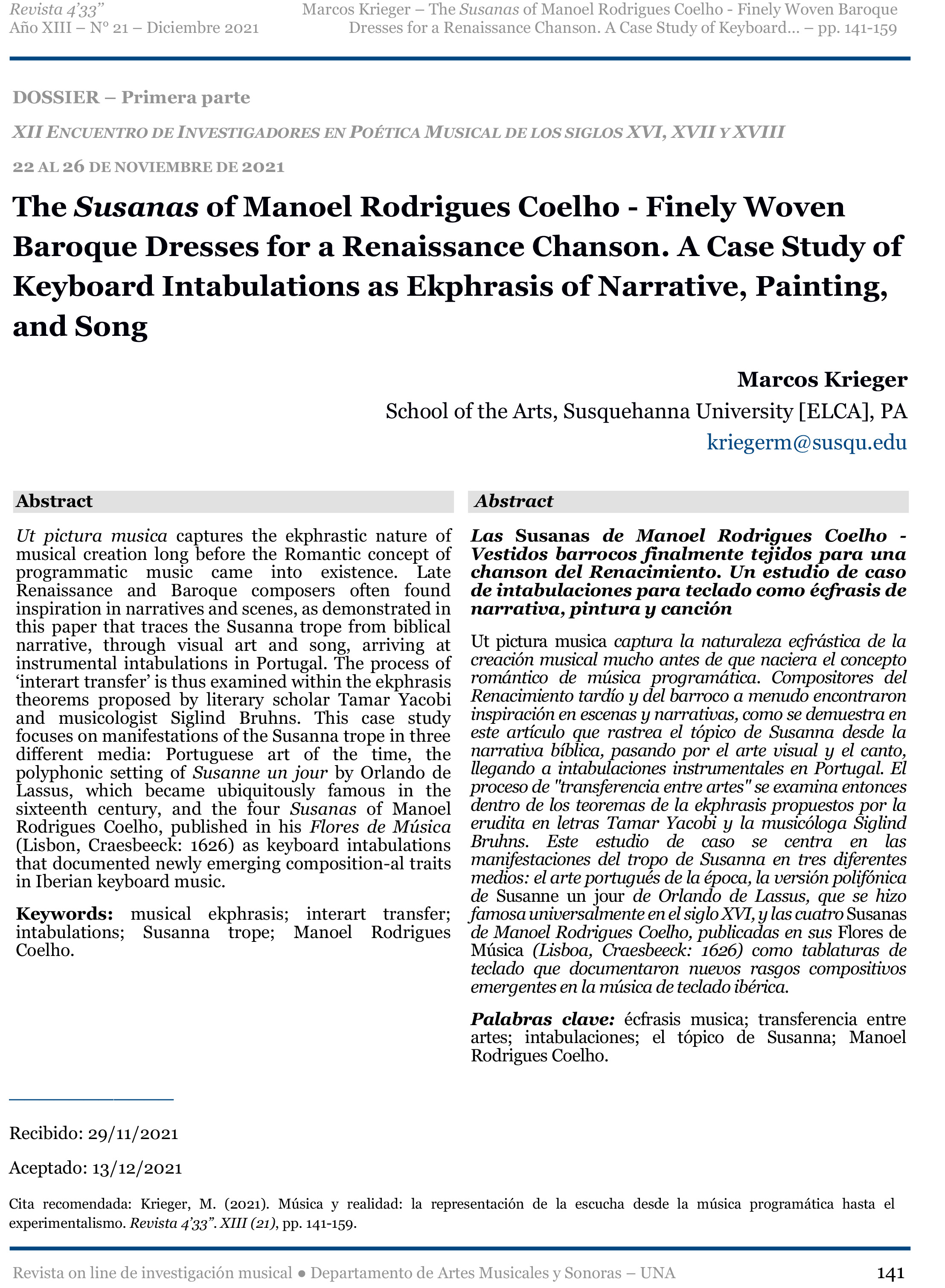The Susanas of Manoel Rodrigues Coelho - Finely Woven Baroque Dresses for a Renaissance Chanson. A Case Study of Keyboard Intabulations as Ekphrasis of Narrative, Painting, and Song
Palabras clave:
musical ekphrasis, interart transfer, intabulations, Susanna trope, Manoel Rodrigues Coelho, écfrasis musica, transferencia entre artes, intabulaciones, el tópico de SusannaResumen
Ut pictura musica captures the ekphrastic nature of musical creation long before the Romantic concept of programmatic music came into existence. Late Renaissance and Baroque composers often found inspiration in narratives and scenes, as demonstrated in this paper that traces the Susanna trope from biblical narrative, through visual art and song, arriving at instrumental intabulations in Portugal. The process of ‘interart transfer’ is thus examined within the ekphrasis theorems proposed by literary scholar Tamar Yacobi and musicologist Siglind Bruhns. This case study focuses on manifestations of the Susanna trope in three different media: Portuguese art of the time, the polyphonic setting of Susanne un jour by Orlando de Lassus, which became ubiquitously famous in the sixteenth century, and the four Susanas of Manoel Rodrigues Coelho, published in his Flores de Música (Lisbon, Craesbeeck: 1626) as keyboard intabulations that documented newly emerging composition-al traits in Iberian keyboard music.
ABSTRACT
Las Susanas de Manoel Rodrigues Coelho - Vestidos barrocos finalmente tejidos para una chanson del Renacimiento. Un estudio de caso de intabulaciones para teclado como écfrasis de narrativa, pintura y canción
Ut pictura musica captura la naturaleza ecfrástica de la creación musical mucho antes de que naciera el concepto romántico de música programática. Compositores del Renacimiento tardío y del barroco a menudo encontraron inspiración en escenas y narrativas, como se demuestra en este artículo que rastrea el tópico de Susanna desde la narrativa bíblica, pasando por el arte visual y el canto, llegando a intabulaciones instrumentales en Portugal. El proceso de "transferencia entre artes" se examina entonces dentro de los teoremas de la ekphrasis propuestos por la erudita en letras Tamar Yacobi y la musicóloga Siglind Bruhns. Este estudio de caso se centra en las manifestaciones del tropo de Susanna en tres diferentes medios: el arte portugués de la época, la versión polifónica de Susanne un jour de Orlando de Lassus, que se hizo famosa universalmente en el siglo XVI, y las cuatro Susanas de Manoel Rodrigues Coelho, publicadas en sus Flores de Música (Lisboa, Craesbeeck: 1626) como tablaturas de teclado que documentaron nuevos rasgos compositivos emergentes en la música de teclado ibérica.


